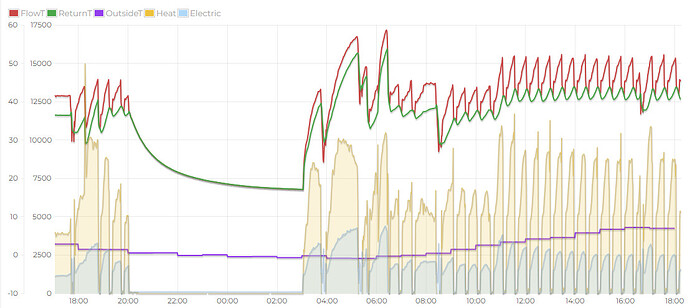I’d be interested to know why. I’ve invested in a wifi switch for one of the 3kW immersions in the UFH buffer tank which I intend to turn on for 4 hours on Octopus Go overnight to supplement the ASHP on cold nights.
Like you, I see a significant drop in the ability of our ASHP while it’s having to defrost. So my thought was to supplement with the immersion in the UFH tank.
We have a 9kW ASHP which feeds the UfH in an insulated slab. When the weather is around 10C, then a 4 hour run on the off peak Octopus Go tariff is enough to keep the house very warm (shorts and t shirts warm), so our usage is about 4 hours at 3kW @ 9p per kWh.
But when it’s cooler, the ASHP cycles through heating and defrosting and the UFH buffer tank temperature doesn’t really increase like it does on warmer days. So it’s a bit cooler - even have to put a jumper on…
We’ve only just set this up, so it will be interesting to see what the actual effect of the additional 3kW into the UFH buffer tank will be - but I can’t imagine it won’t make up the deficit (as per the @ColinS’s statement above). I should add that we only use the ASHP for the UFH, so there’s no contention with heating or hot water.
Simon






